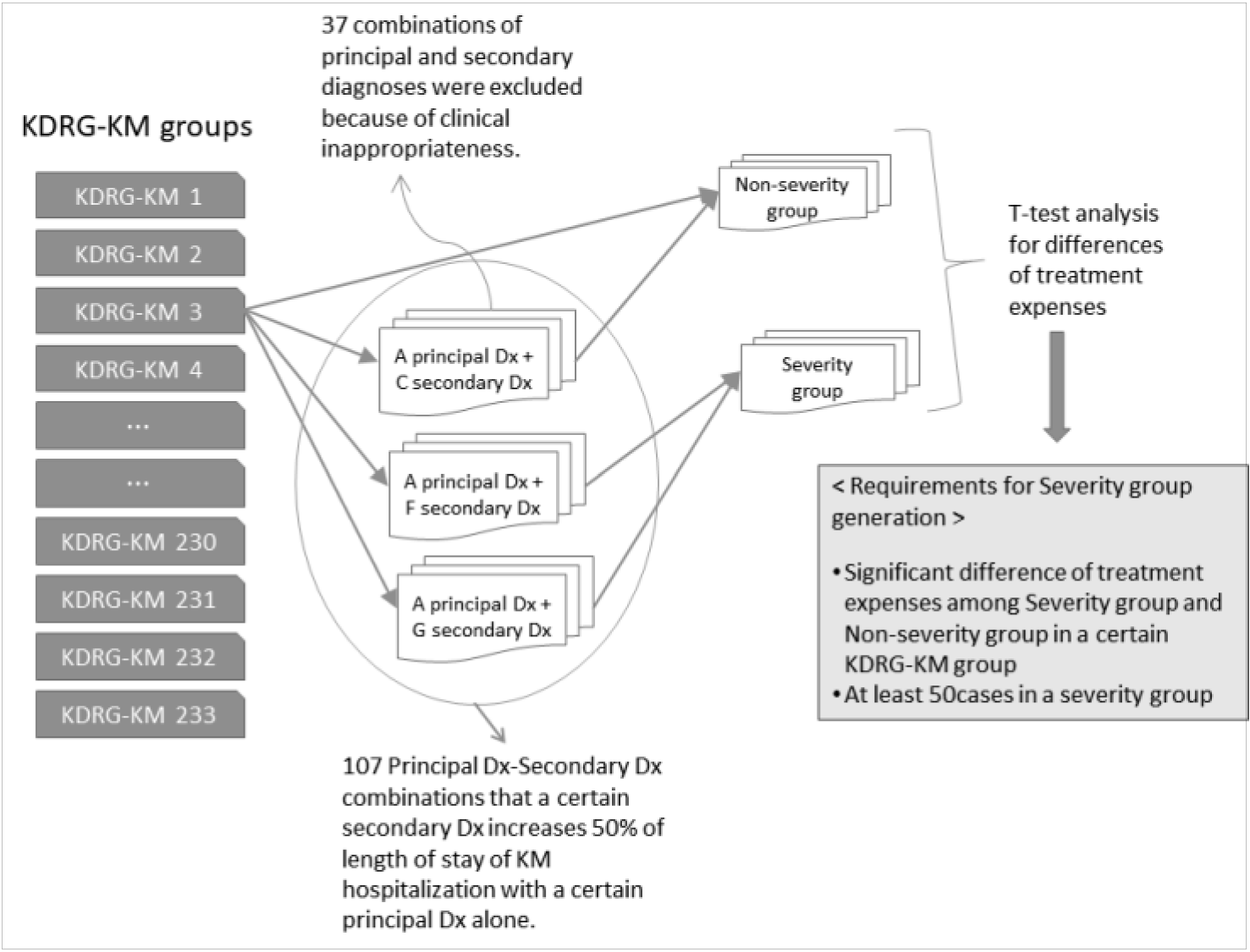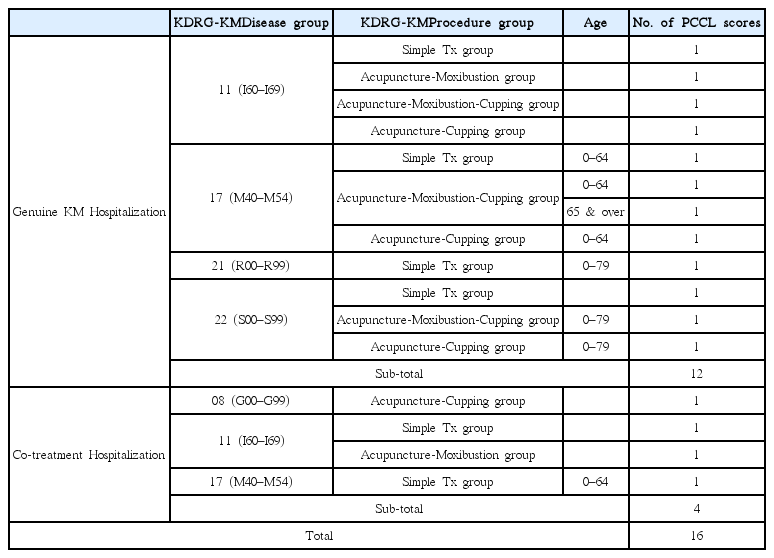A Study on the Severity Classification in the KDRG-KM (Korean Diagnosis-Related Groups - Korean Medicine)
Article information
Abstract
Backgrounds
Inpatient Classification System for Korean Medicine (KDRG-KM) was developed and has been applied for monitoring the costs of KM hospitals. Yet severity of patients’ condition is not applied in the KDRG-KM.
Objectives
This study aimed to develop the severity classification methods for KDRG-KM and assessed the explanation powers of severity adjusted KDRG-KM.
Methods
Clinical experts panel was organized based on the recommendations from 12 clinical societies of Korean Medicine. Two expert panel workshops were held to develop the severity classification options, and the Delphi survey was performed to measure CCL(Complexity and Comorbidity Level) scores. Explanation powers were calculated using the inpatient EDI claim data issued by hospitals and clinics in 2012.
Results
Two options for severity classification were deduced based on the severity classification principle in the domestic and foreign DRG systems. The option one is to classify severity groups using CCL and PCCL(Patient Clinical Complexity Level) scores, and the option two is to form a severity group with patients who belonged principal diagnosis-secondary diagnosis combinations which prolonged length of stay. All two options enhanced explanation powers less than 1%. For third option, patients who received certain treatments for severe conditions were grouped into severity group. The treatment expense of the severity group was significantly higher than that of other patients groups.
Conclusions
Applying the severity classifications using principal diagnosis and secondary diagnoses can advance the KDRG-KM for genuine KM hospitalization. More practically, including patients with procedures for severe conditions in a severity group needs to be considered.

The Process of Severity Group Classification using KDRG’s PCCL Scores(Option 1)
†HIRA : Health Insurance Review & Assessment Service

The Process of Severity Group Classification using KM Principal & Secondary Diagnoses Combination (Option 2)

Definition of the CCL(Complications & Comorbidities Level) Scores & PCCL(Patient Clinical Complexity Level) Scores




